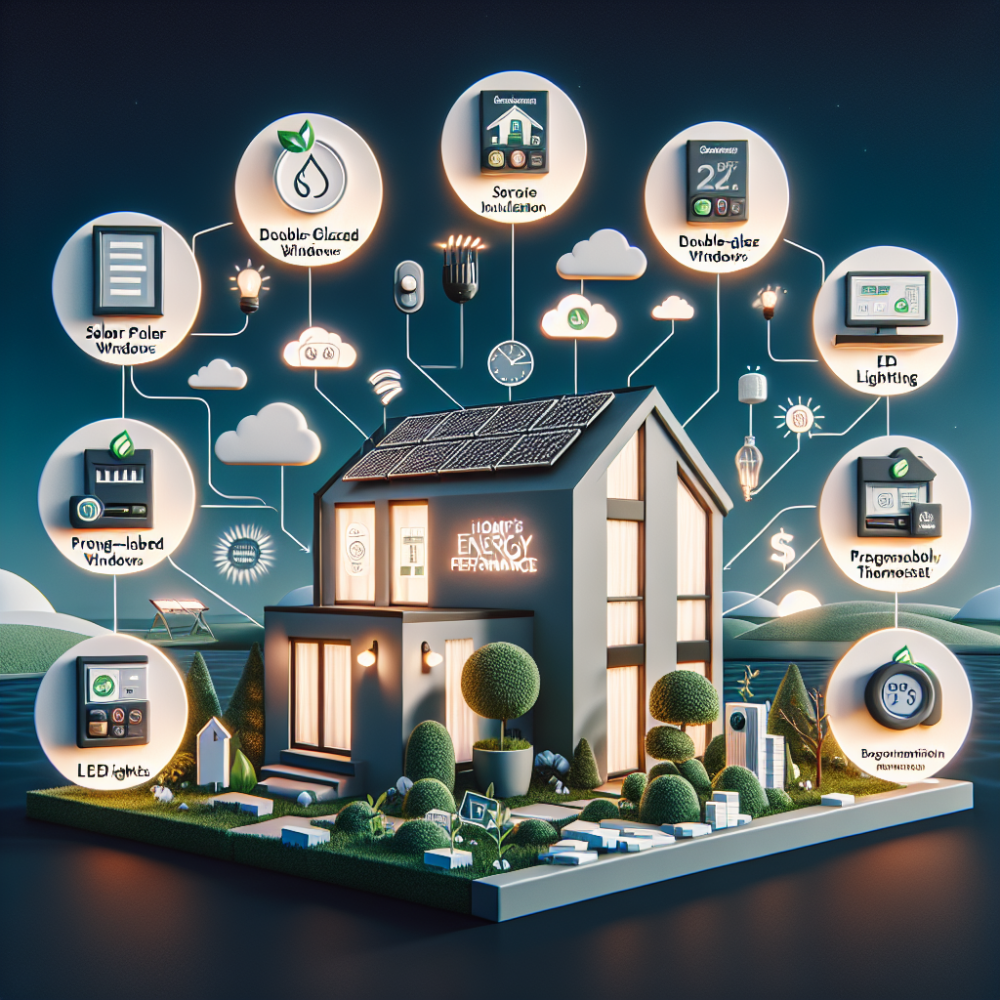Top 10 Strategies for Enhancing Your Home's Energy Performance

Posted on: Monday, March 4th, 2024
As global focus shifts towards sustainability, making energy-efficient upgrades in our homes is more critical than ever. Implementing these changes not only reduces our environmental footprint but also cuts down on utility bills, making it a financially smart move. Fortunately, advancements in technology and increased market availability of green products have made it easier to improve our homes' energy performance. This guide presents the top 10 energy efficiency upgrades that you can make to your home, ensuring both environmental and economic benefits.
1. Upgrade to LED Lighting: Swapping out incandescent bulbs for LED lights is one of the simplest and most effective ways to reduce your home's energy consumption. LED bulbs use at least 75% less energy and last 25 times longer than traditional bulbs.
2. Install a Programmable Thermostat: Heating and cooling account for a significant portion of household energy use. A programmable thermostat can optimize your home's temperature settings based on your schedule, potentially saving you hundreds of dollars annually on energy bills.
3. Enhance Insulation: Proper insulation keeps your home warmer in the winter and cooler in the summer, reducing the need for heating and cooling. Focus on upgrading insulation in areas like attics, walls, and floors for the best results.
4. Seal Windows and Doors: Drafts can significantly increase your energy costs. Sealing leaks around windows and doors with weather stripping or caulk can improve your home's energy efficiency.
5. Use Energy Star Appliances: When it's time to replace appliances, choosing those with the Energy Star label can lead to considerable energy savings over the appliances' lifetimes. These products are certified to be more efficient than their standard counterparts.
6. Invest in Solar Panels: Solar power can dramatically reduce your electricity bills and your carbon footprint. The initial investment is offset by the long-term savings and potential government incentives.
7. Consider a Tankless Water Heater: Tankless water heaters supply hot water on demand, reducing the energy wasted in heating a large tank of water continuously. They're more efficient compared to traditional water heaters, offering 24-34% more energy efficiency for households using less than 41 gallons of hot water daily.
8. Upgrade Windows: Replacing old, inefficient windows with energy-efficient models can reduce your heating and cooling costs. Look for windows with double glazing and low-E coatings to maximize energy savings.
9. Adopt Smart Power Strips: Idle electronics can still consume power when they're turned off. Smart power strips cut off power to electronics when they're not in use, helping to eliminate this "phantom" energy use.
10. Improve Water Usage: Installing low-flow showerheads and toilets can drastically reduce your water consumption. Reduced water use means less energy is required to heat the water, leading to significant energy savings.
By implementing these top 10 energy efficiency improvements, homeowners can significantly reduce their energy consumption and contribute to a more sustainable planet. Each step not only helps in cutting down utility bills but also plays a vital role in mitigating the impacts of climate change. Taking action towards a more energy-efficient home is an investment that pays off in the long run, both financially and environmentally.